This post is also available in:
![]() 日本語
日本語 ![]() Español
Español
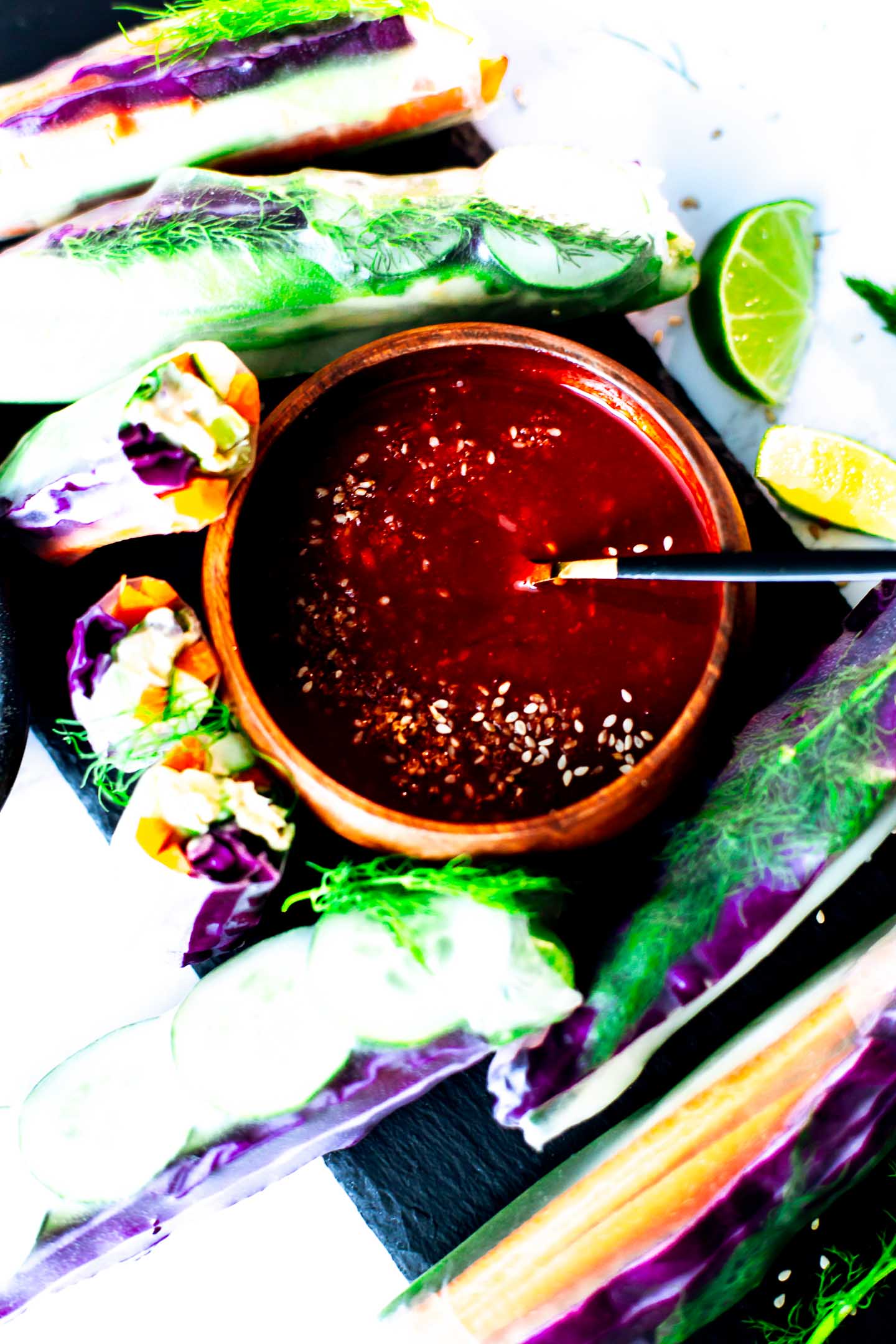
This spicy Miso sauce with Gochujang comes together easily in 3 minutes or less. Just 7 ingredients required for this flavorful, Umami-packed Asian sauce.
This recipe is healthy, vegan, oil-free, gluten-free, and easily WFPB.
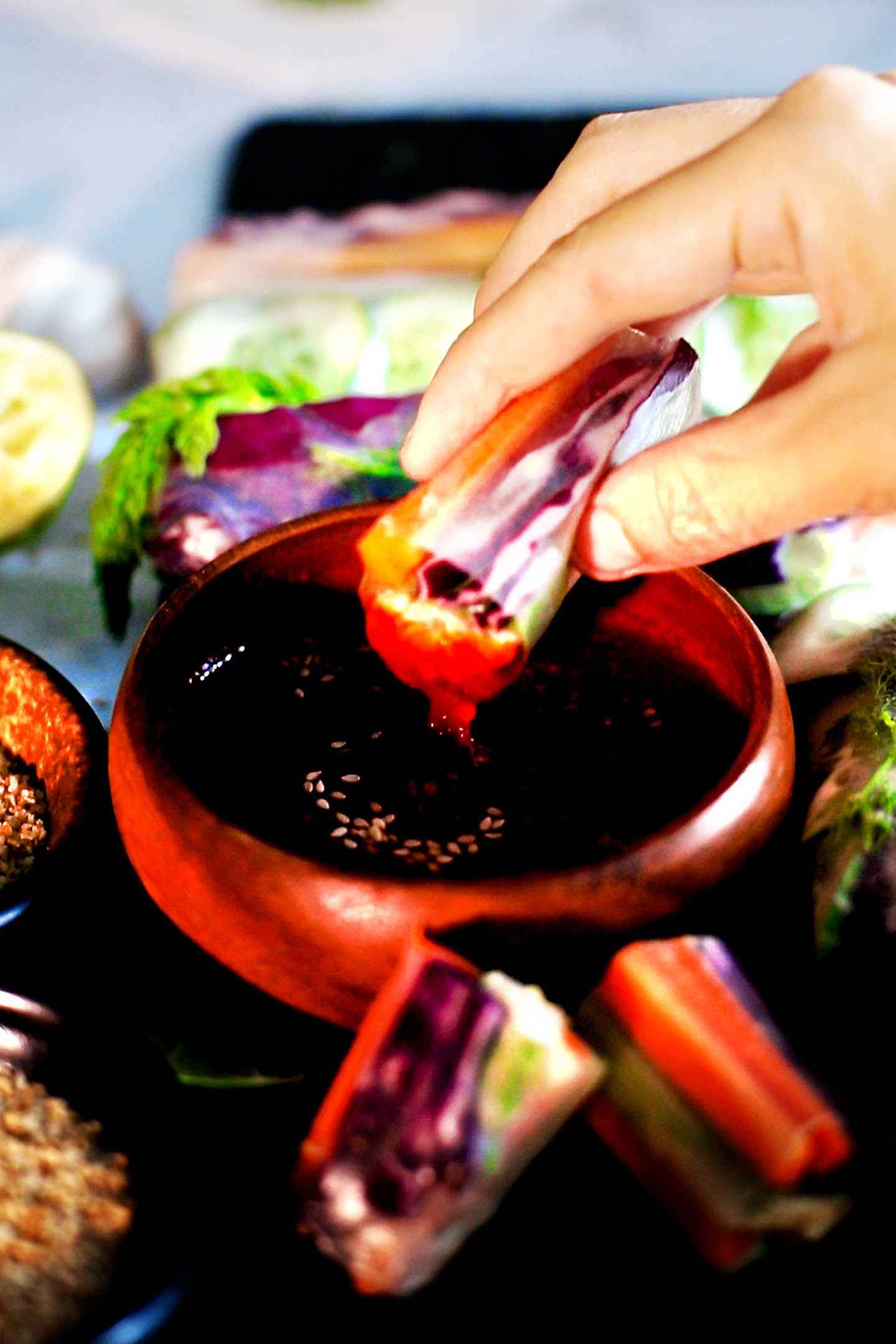
The Spicy Miso Sauce with Gochujang Recipe
Classic Japanese Miso Tare sauce (味噌ダレ) is made with Miso, cooking sake, Mirin, and sugar, with no spices or chili peppers used. This basic Miso tare is versatile and is widely used as a condiment for Tonkatsu, Dengaku, and other Japanese classics.
The spicy Miso sauce with Gochujang recipe is my inspired take on Japanese Miso Tare, adding a zingy and spicy flavor from Gochujang (Korean red pepper paste/고추장). It’s a so flavorful and appetizing thick sauce with a rich Umami taste. It is good as a dip in light and refreshing vegetable spring rolls with homemade hummus. Moreover, it’s versatile, so also delicious as a marinade for Tofu or vegetables.

How to Make Spicy Miso Sauce with Gochujang
This umami-filled Japanese-style spicy Miso sauce recipe starts with mincing garlic, then combining the minced garlic, Gochujang for spiciness, Miso (I used red Miso) for savory Umami, ground roasted sesame seeds (Suri-Goma/すりごま) for sesame relish, rice vinegar, sugar, and lemon juice to balance out and enhance the flavors.
The combination of red Miso and Gochujang (Korean Miso) gives it extra richness.
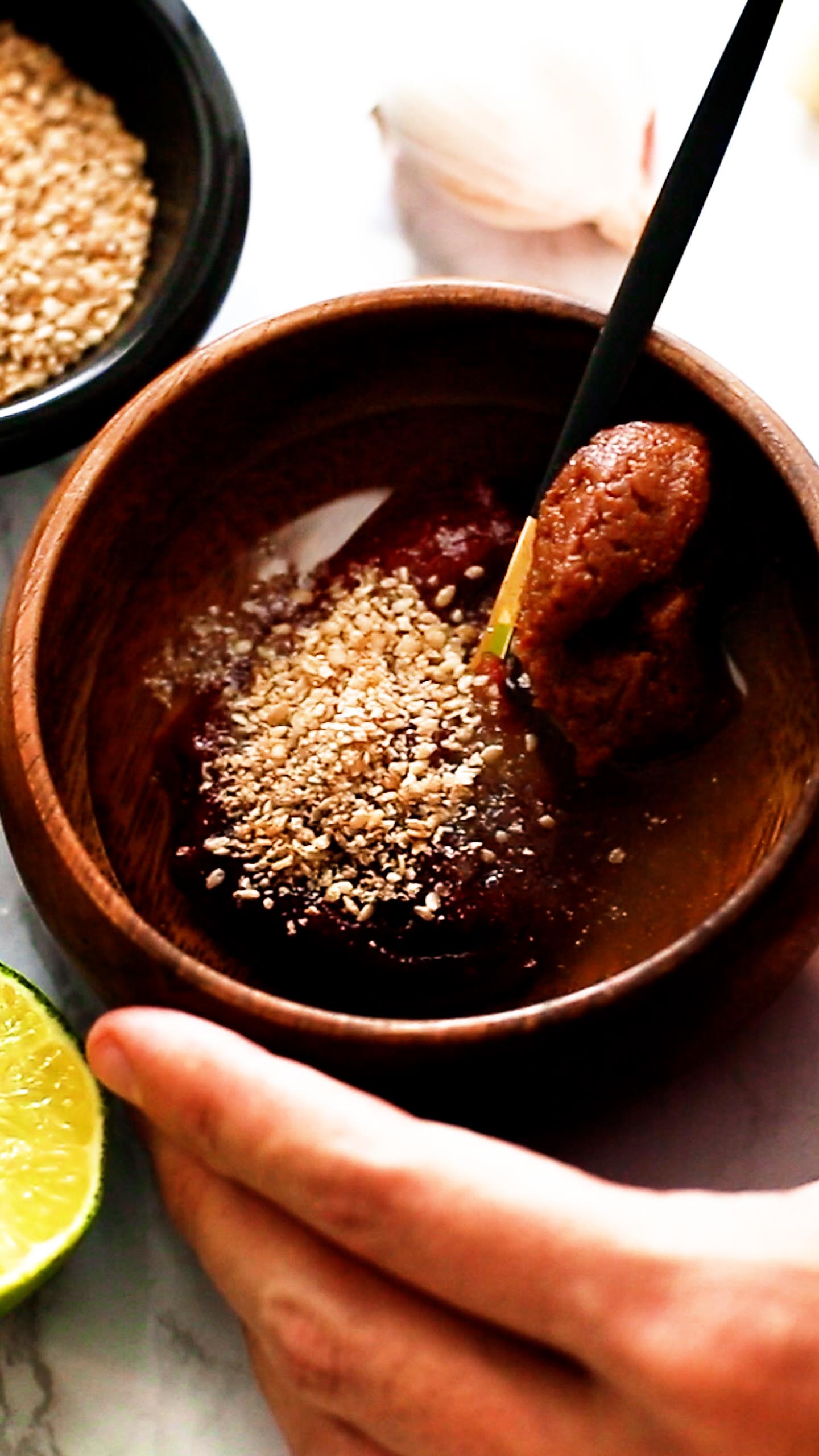
Heat the mixture in a microwave, then stir until smooth.
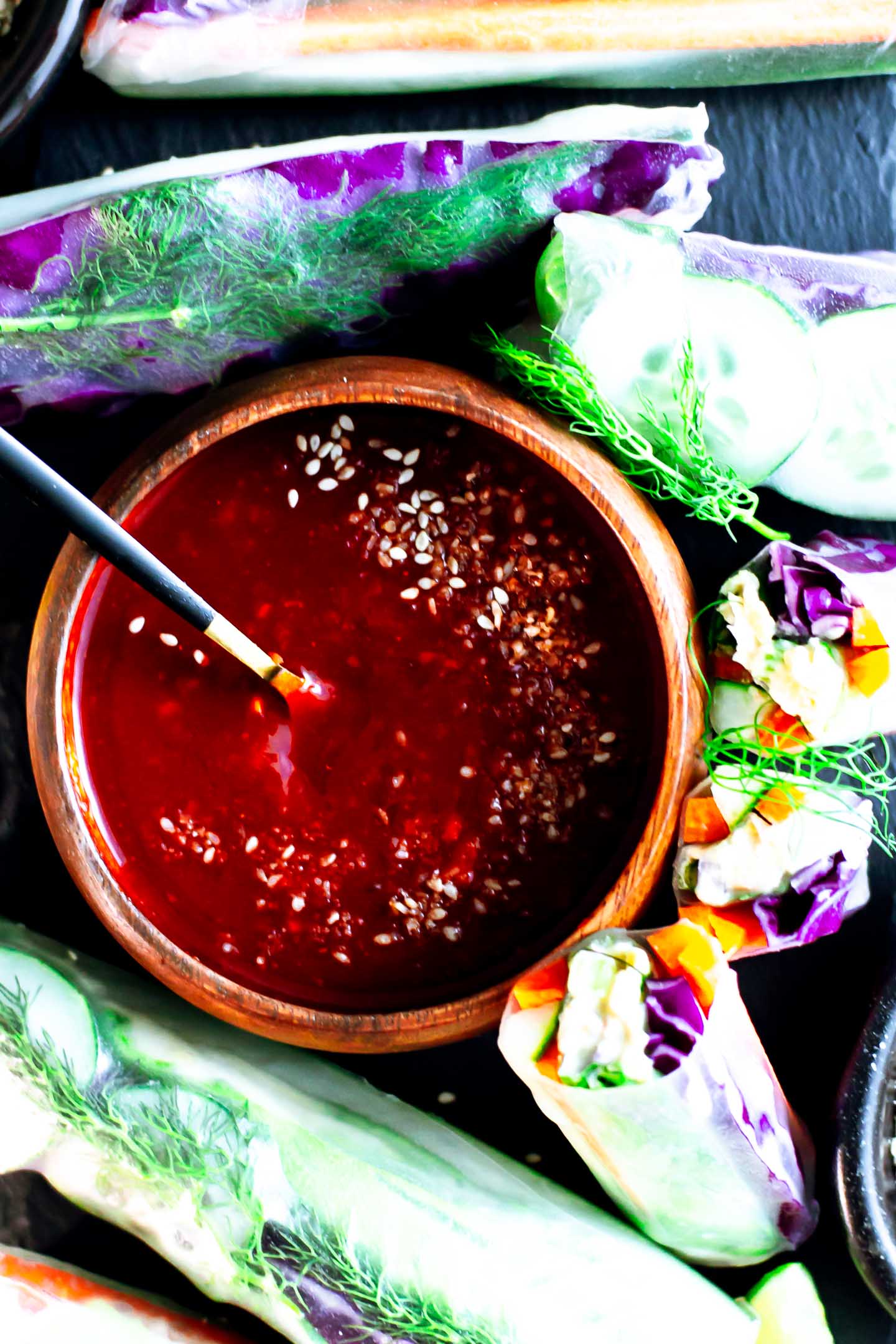
It adds a big flavor to light foods, such as Tofu, vegetables, noodles, and rice. Perfect served with warm or cool meals, or used as a marinade. I like to put it on Tofu fried rice.

Know Asian Ingredients
Japanese Miso and Korean Miso (Gochujang)
- Miso (味噌): a traditional Japanese seasoning made by steaming soybeans and fermenting them with Koji (malted rice) and salt. Miso is not spicy.
- Gochujang (고추장): a Korean seasoning made by fermenting rice or glutinous rice with malted rice and Gochugaru (Korean chili powder). It is characterized by its sweet and spicy taste. In Japan, it is also called Korean Miso or red pepper Miso.
Note: Chinese Miso includes Tianmian (甜麺醤) and Doubanjiang (豆板醤). In Japan, Chinese and Korean food is second only to Japanese food in popularity, so both Korean and Chinese seasonings are commonly used in cooking.
When we talk about Miso, we are referring to Japanese Miso.
Awase Miso (合わせ味噌): combining two or more types of Miso is called Awase Miso meaning mixed Miso. This is a common cooking method in Japanese cuisine. One of the most common is to make Miso soup with a blend of red Miso (Aka Miso 赤味噌) and white Miso (Shiro Miso 白味噌). My mother and grandmother often do this. The spicy Miso Sauce featured in this blog post uses Awase Miso of Japanese red Miso and Gochujang.
Rice Vinegar (米酢 or 酢)
Rice vinegar is vinegar made by fermenting rice and is used extensively in East Asian (Japan, China, and Korea) cuisine. Japanese, Chinese, and Korean vinegar differ in taste. Japanese rice vinegar has a very mild taste, and is used in seasonings, stir-fries, Sushi rice (Sumeshi 酢飯), etc. In Japan, “vinegar” refers to rice vinegar, the most popular vinegar.
Suri-Goma (すりごま)
Suri-Goma is ground roasted sesame seeds. Iri-Goma (いりごま) is roasted sesame seeds. So, Suri-Goma is ground Iri-Goma. In Japan, sesame seeds are sold as either Suri-Goma or Iri-Goma. Both types of sesame are often used in cooking to add their sesame flavor. On the other hand, sesame seeds are rarely sold and eaten raw. For me, the rich flavor of sesame reminds me very much of Japan.
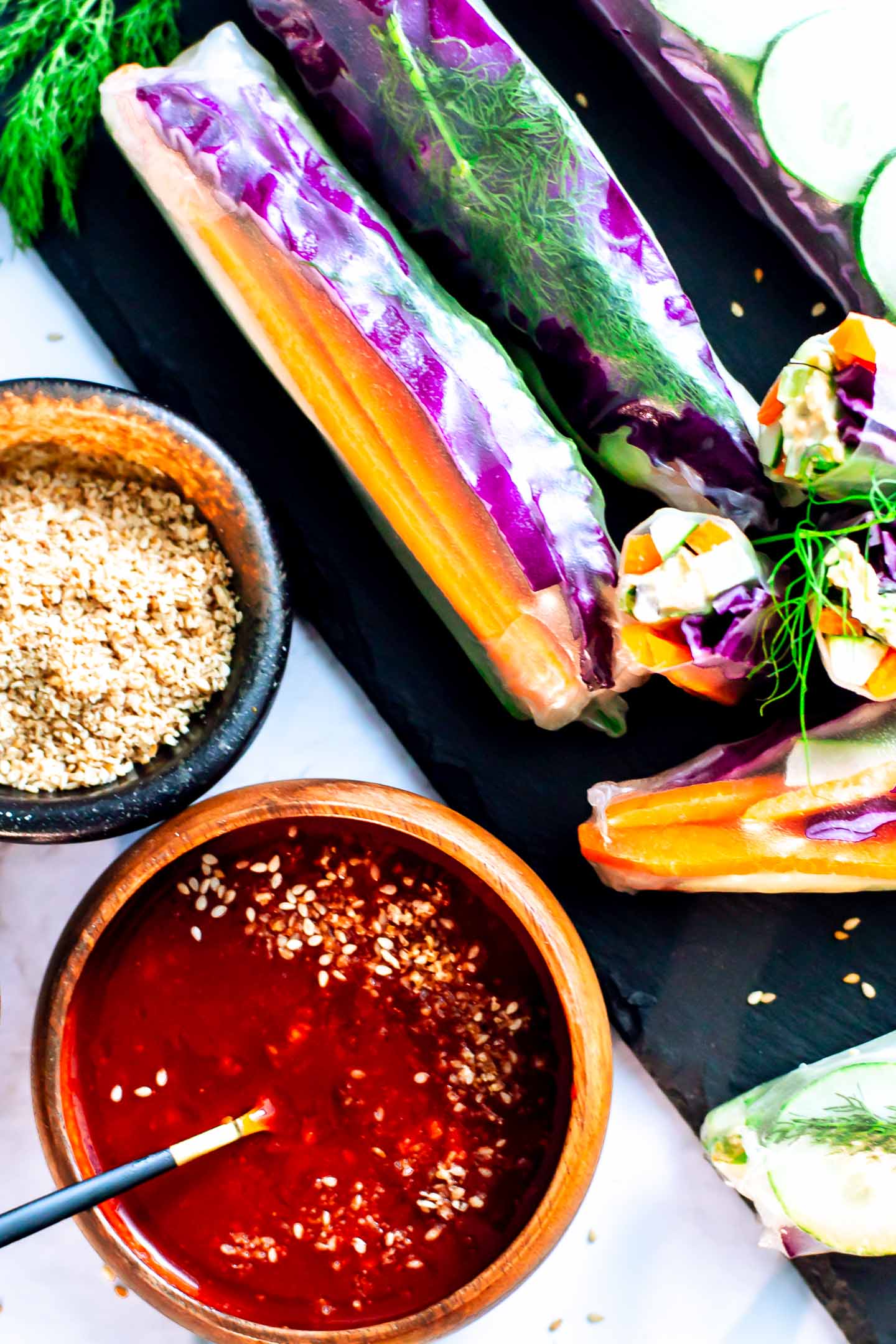
Substitutions
Substitute for Gochujang
- Sriracha sauce
- Chipotle chili: a Mexican chili made by drying and smoking ripe jalapeno peppers.
Gochujang can be substituted with Sriracha sauce or chipotle chili, which is similar in heat level. Gochujang is not as hot as cayenne pepper. The chili used in Gochujang is a Korean chili powder called Gochugaru.
Substitute for Miso
The best substitute for Miso alone is soy sauce plus Kinako, but if you are substituting Miso in this recipe, just soy sauce will work.
Kinako (きなこ) is roasted soybean powder. It is often used in traditional Japanese confectionery (Wagashi 和菓子), which is often served with green tea.
Soy sauce, like Miso, is made from soybeans and salt and fermented.
Note: In Latin America, such as Mexico, Guatemala, and Costa Rica, I have seen soybean flour (harina de soya) commonly sold in local stores and mercados. Miso, thankfully, is sometimes sold at grocery stores selling Asian foods. Soy sauce (Japanese, Chinese, or Korean) is relatively easy to find.
Substitute for rice vinegar
- Apple cider vinegar
- White wine vinegar
- Balsamic vinegar
You can substitute rice vinegar with apple cider vinegar or white wine vinegar. I sometimes make it with balsamic vinegar and it is good.
Ground roasted sesame seeds (Suri-Goma)
Sesame seeds are a nutritious food with high content of vitamins, minerals, antioxidants, and dietary fiber. However, sesame seeds have hard outer skin, and eating them raw is not good for digestion.
If only raw sesame seeds are available, it is highly recommended to lightly roast them in a frying pan and grind them. The sesame seeds I used this time were ground with an electric coffee/spice grinder. Alternatively, you can use a mortar and pestle to crush or use a sesame seed grinder (Gomasuri-ki ごますり器).
The flavor of sesame is definitely the best when it is roasted or crushed. Or rather, it has no aroma at all when raw!
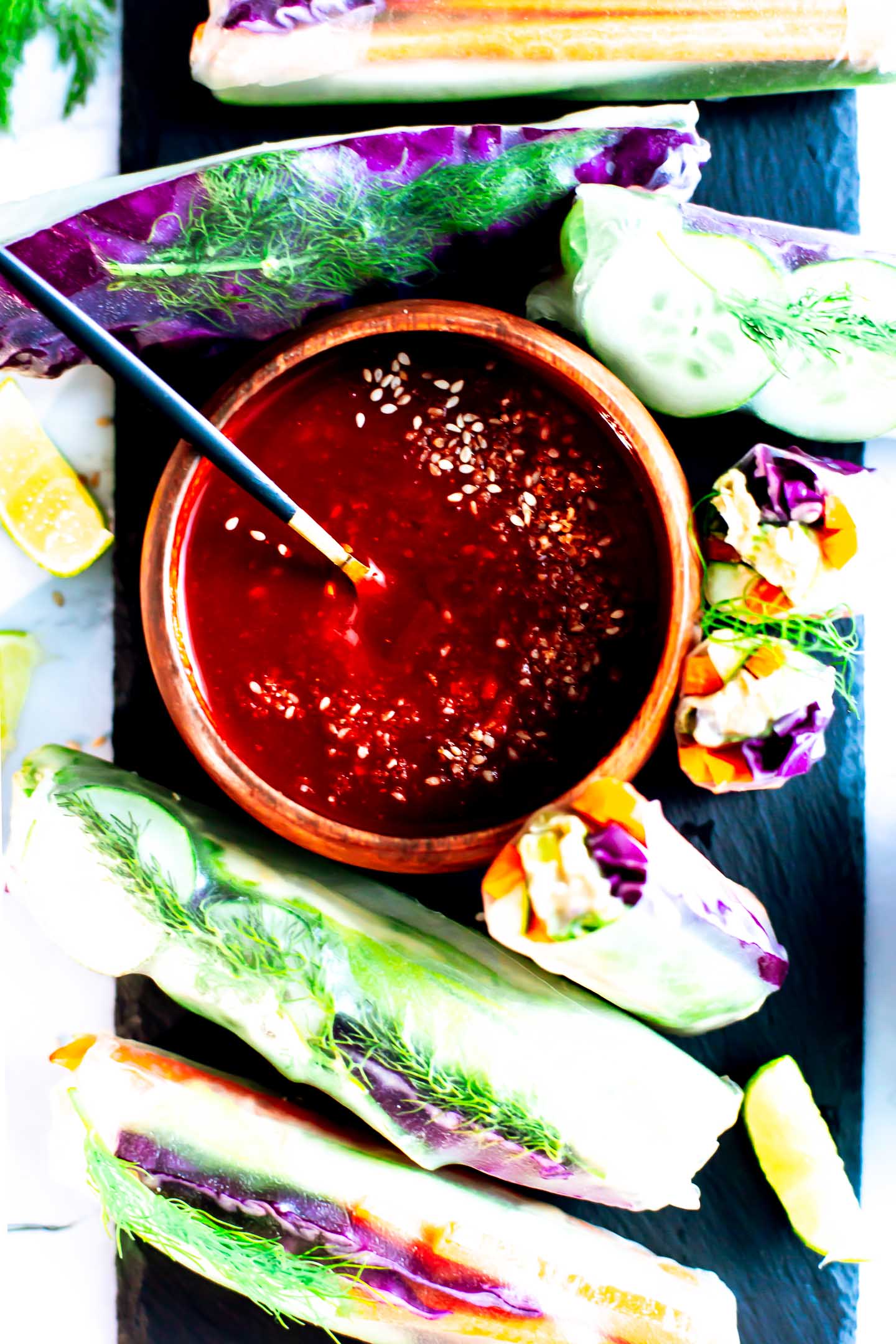
Tips for Vegan, WFPB, and Gluten-Free
This recipe is 100% plant-based and vegan.
If you are gluten-free, check the label carefully for the type of miso. Rice Miso (米味噌) made with rice malt does not contain gluten. But, barley Miso (麦味噌) made with barley malt contains gluten. Both rice and barley Miso are made from soybeans. Note that about 80% of Miso produced in Japan is rice Miso. Most Miso sold in stores is rice Miso. Also, use gluten-free Gochujang since some brands contain wheat.
For WFPB (Whole Food Plant-Based) diet, swap sugar with date sugar or erythritol. I often do this for healthier eating.
Did you know? Some Asian sauces, such as Thai sweet chili sauce, may contain fish sauce or other seafood.
More Vegan Recipes
If you try this recipe, feel free to leave a comment, rate it, and tag a photo @izumimizokawa on Instagram🌶
Spicy Miso Sauce with Gochujang (Vegan 味噌ダレ)
Ingredients
- 1 Tbsp Gochujang
- ½ Tbsp Miso red
- 1 Tbsp rice vinegar
- 1-2 cloves garlic
- 2 tsp sugar
- 1 Tbsp lemon juice
- 1-2 tsp ground toasted sesame seeds (Suri-Goma)
Instructions
- Mince garlic with a knife or garlic press.
- In a small microwave-safe bowl, combine the minced garlic, Gochujang, Miso, rice vinegar, sugar, lemon juice, and ground roasted sesame seeds.
- Cover and microwave for 30 seconds to 1 minute. *The sauce can be eaten raw.
- Stir well with a spoon and/or chopsticks until smooth.
- Taste and adjust to your liking (more sugar for sweetness, or more vinegar, lemon juice, or water if the sauce is too thick, etc.)
- Garnish with a little more suri-goma and sesame seeds, and use as a dip in summer rolls, or a marinade for Tofu or veggies, or put it over fried rice.
- Refrigerate leftovers in an airtight container for up to 1 week.
Video
Notes
- If Gluten-Free: use rice Miso, and avoid barley Miso. And, choose gluten-free Gochujang. Some brands contain wheat.
- If WFPB: sub date sugar or erythritol for sugar.
- If suri-goma is not available, lightly roast sesame seeds in a pan before grinding them with a grinder.
- Nutrition information below is an estimate calculated with the lesser amounts of garlic and sesame seeds.
Nutrition
PIN the following image, and follow me on Pinterest for plant-based eating inspiration🌿
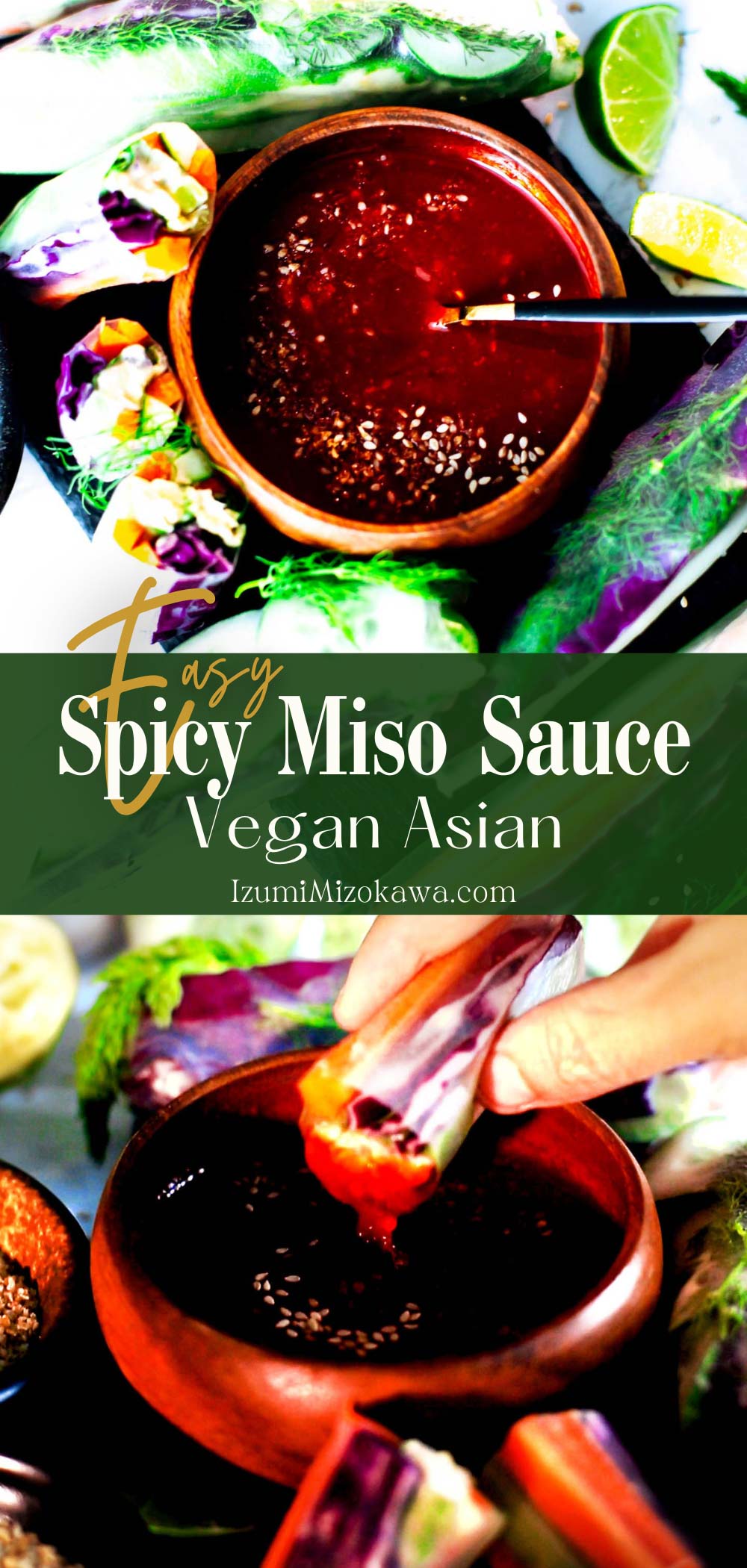

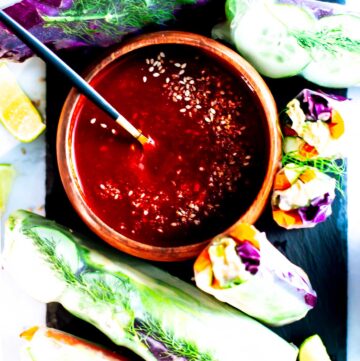
Leave a Reply